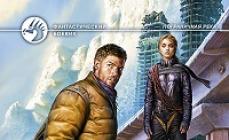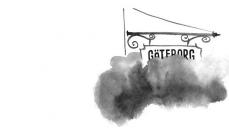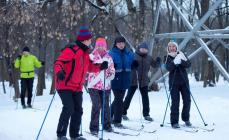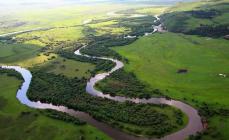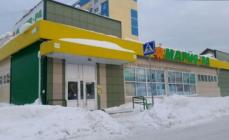Every trip to the High Tatras is something special.


background
A year and a half ago I came to Zakopane for the first time to see the High Tatras. Then my girlfriend and I, two young students, wanted to see the mountains and chose one of the most famous routes of the Tatra National Park. Our impressions were so strong that as soon as we began to think where we would go this year, we immediately decided that it would definitely be the Tatras. In a few months, we began to plan our trip, found a cozy accommodation in Zakopane and began to think about what to see. To my surprise, it turned out that there are so many hiking trails in the National Park that even 5 days is not enough to see everything. The Koschelinska Valley is part of the Tatra National Park and is the second largest. Only on its territory there are about 14 trails. We chose it because we got to the flowering of crocuses.






Unforgettable journey
We chose the green route and moved straight ahead, approaching the peaks closer and closer, and gaining altitude. As soon as we entered the territory of the Koshchelinskaya valley, I wanted to shout: “How beautiful it is here!”. And as soon as we walked 200 meters and got to a huge clearing, beyond which snow-capped peaks could be seen, I screamed: “I have never seen anything like this in my life!”. It was wonderful, just like on postcards, just like in dreams, when the sun is shining, it's warm, small crocuses are blooming on the ground, and there are massive and beautiful mountains in the distance.
To be honest, I never in my life could have thought that such beauty could be found in Poland. Sometimes it seemed to me that we were teleported to Canada. What I like most about the Tatras is that you feel close to nature. You just walk along the paths, among the trees, mountains, hills. You feel absolutely safe and somehow special. And with all this, you do not need to be physically fit or a climber, there are quite a lot of families with children and the elderly. Many routes do not require strong physical exertion.
Navigating the National Park is very easy. Route signs are everywhere, each route is marked with its own color. The time of ascent is written on the signs. It is quite accurate, since both the height difference and the difficulty of the ascent were taken into account in the calculations. Also quite often there are tables where you can arrange a halt, have a bite to eat and drink hot tea from a thermos. Our green route led us up to the Ornak mountain shelter. From there we turned onto another path and climbed to Smrechinski Lake, reaching a height of 1126 meters. To be honest, it was the hardest and most dangerous climb in my life. But what beauty lay ahead of us.
Mountain lakes are always extraordinarily beautiful: there is a forest around, silence, and mountains are naturally visible in the distance. After this wonderful adventure and no less dangerous descent, we warmed up and rested in the Ornak shelter. And towards sunset, we chose the route to the Mentusier Valley and came across an incredibly beautiful alpine meadow. From all sides of the mountain, silence, there are practically no people. At that moment, it seemed to me that this is the dream of every girl. I wanted to cry with admiration, and no amount of fatigue can ruin such moments. And before we were about to say goodbye to this beautiful valley, Deer came out of the forest to us. It was my dream. I then felt the happiest and most peaceful. And I really want to convey this to others and tell that absolutely everyone can see and feel this. Especially in a place like Koshchelinskaya Valley.









Travel notes
- The Tatras have their own dialect. It would seem that people also speak Polish, but the language is different. It's exactly the same as the Ukrainian language. Many people know that in the western part of Ukraine speech is different, and many words have a different meaning. If you are planning a long trip around Poland, try to listen to the speech and recognize the dialects;
- here in the Tatras everywhere they serve potato pancakes;
- the weather in the Tatras is very changeable, precipitation here falls on average every three days, and in one day you can see the summer sun, then catch heavy rain, and in the evening find yourself ankle-deep in snow;
- snow disappears from the peaks only by the end of August;
- every April there is a crocus blossom festival;
- take a closer look at the vegetation - there are plants here that you will not find in other places.







- I would advise to go here in summer and autumn. In summer it is quite easy: there are no difficulties on the routes. Autumn is the most beautiful and diverse colors. If you want to see snow but don't want to face the weight of the climb, come here in late autumn - late October or early November. The trails are not yet covered with snow, and there is already snow on the peaks. In winter, it is also beautiful here, I would even say - this is the place for a perfect Christmas, plus ski resorts open, but moving around the national park is harder. We were here in April and were upset - many routes are still closed due to the fact that water always flows under our feet, as snow melts from the mountains;
- ALWAYS take trekking poles with you;
- Pay attention to the color of the route. Not many people know that color is not only for navigation, but also carries its own symbolism. Of course, they say that in Poland the color does not mean the difficulty of the route, but it didn’t seem so to me. It is believed that the green route is the easiest. And so it was with the route we chose. He did not gain great height, and any grandmother can pass him. Red is the most interesting and passes through the most important places of the mountain range. However, it can also be a path along a rocky pass. You should be ready for this. Black is the most complex and shortest. And I thought it was true. Our ascent to the lake was so steep and slippery that sometimes it seemed that I was about to fall;
- Be prepared for the weather, especially shoes and raincoats;
- Take a snack with you, a thermos of tea, but do not deny yourself the pleasure of having a snack in a mountain pass with hot potato pancakes;
- Be sure to agree on the start and end times of your itinerary. Minibuses to the entrance to the National Park go from the bus station, where the bus schedule hangs. At first glance, it seems that nothing is clear, but do not panic, below, under the * or ^ signs, it is written that the given time is relevant from such and such to such and such a date. It's simple - look for the time of the year at which you arrived, take pictures of the schedule and leave at the chosen time;
- Be sure to note that local public transport runs ONCE PER HOUR. Therefore, be sure to take a picture of the city bus schedule so as not to spend two hours waiting for the bus. Also, be careful - check what time the last minibus leaves the National Park. Sleeping in the woods is no fun.
On December 28, 2016, the Central Suburban Passenger Company solemnly congratulated 4 billionth passenger(report from 2006), which arrived at the Kazansky railway station from the Golutvin station.
More than one and a half million people use electric trains in the Moscow region every day, among which 100% are our readers. Especially for them, a selection of useful sites, applications and tips.
1. In the car you can expand your horizons

When you go by train, it may seem that there is nothing interesting near the railways near Moscow. But that's not the case at all. Curious places from the point of view of history and culture are hidden on every corner. There are audio tours for the routes of Moscow and St. Petersburg trains / The izi.travel application has free audio guides developed by experienced local historians. So far, excursions are available only for 14 routes (in the Moscow region):
Moscow - Golitsyno (Belarusian direction)
Moscow - Tula (Kursk direction)
Moscow - Ryazan (Kazan direction)
Moscow - Dmitrov (Savelovskoye direction)
Moscow - Peredelkino (Kiev direction)
Moscow - Kaluga (Kiev direction)
Moscow - Necklace (Paveletsky direction)
Moscow - Mozhaisk (Belarusian direction)
Moscow - Vladimir (Gorky direction)
Dmitrov - Dubna (Savelovskoe direction)
Lyubertsy - Shatura (Shatura)
Moscow - Sergiev Posad (Yaroslavl direction)
Moscow - Volokolamsk (Rizhskoe direction)
Moscow - Alexandrov (Yaroslavl direction)
You should search for them in the application according to the words "Talking Express". Some suburban trains already have Wi-Fi, but it's better to download the tour in advance for offline listening.
2. There are excursions on trains

In the summer of 2016, the CPPK began to conduct excursions to the Moscow region several times a month. Participants get to their destination in special carriages with soft seats or on the Manor Express train. During the trip, a guide works in the car.
The idea is just brilliant! No traffic jams, nobody gets sick, you can walk in the car. The cost of the tour, including the ticket, is, on average, from 500 to 1000 rubles.
4. Tickets for some trains are sold online.


On the website rzd.ru you can buy tickets for travel between the stations Moscow Yaroslavskaya, Mytishchi, Bolshevo, Losinoostrovskaya, Pushkino, as well as on some routes of the Republic of Crimea, Krasnodar Territory, Voronezh and Tambov regions.
5. You can find out the train schedule for free by phone, in social networks and using the Telegram bot

Unfortunately, almost every day some trains are canceled or delayed. There are several ways to find out about schedule changes.
You can install a mobile application service SMS informing.
You can subscribe to one of the pages of the CPPK in social networks. And passengers of the Kyiv direction can call a free phone 8-800-200-59-79 , name the station or dial its code to hear the departure time of the next three trains.
6. Electric trains are a cheap replacement for Aeroexpress

Aeroexpress is a very comfortable way to get to airports without traffic jams, but not the cheapest. An adult ticket costs 420 rubles, and a child ticket costs 130 rubles. If you like to save money, you have free time and do not have heavy luggage, then you can replace it with a regular train that leaves from the same station.
Domodedovo: there is an electric train that goes directly to the airport (123 rubles / 1 hour 6 minutes), but it rarely runs.
Several times an hour (from half past five in the morning until half past one at night) an electric train leaves for the Domodedovo station ( bus number 30(journey time - 35 minutes, interval - 15 minutes).
Vnukovo: by train to Tolstopaltsevo station ( 82 rubles/39 minutes), and then drive 25 minutes by bus 32/878.
Sheremetyevo: by train to Lobnya station ( 82 rubles/36 minutes) and from there by bus number 21.
Zhukovsky: by train to the Otdykh station ( 102 rubles/57 minutes), and then on route No. 6 or No. 2 (travel time - 20 minutes, interval - 30 minutes).
7. With a train ticket, you can go to the toilet at the station for free
For many years I have wondered how many people do not know about this opportunity and dutifully pay for what is included in the ticket price.
According to the Charter of Railway Transport of the Russian Federation, passengers, one hour before the trip, one hour after and during the trip (at stops), access to the toilet should be provided free of charge. If you have a ticket for a train or an electric train, a subscription or a transport card with a check that confirms its validity, then you are not required to pay 20-30 rubles for entry.
Usually, cashiers are silent about this (rarely where an inconspicuous ad hangs) and if you give them a ticket instead of money, then an expression of incredible resentment and anger appears on their face. But they skip without a single word, so as not to attract the attention of other passengers to this event, who stand in line behind you and count out a trifle, because they do not know the laws.
8. Electric trains will save you if there are no train tickets




9. No need to pay to enter the platform if you are not going to go

To stand with a friend on the platform until his train arrives, you do not need to buy a ticket. It is necessary to ask at the box office for the “Seeing Card” and leave 100 rubles pledge. With this card, you can go through the turnstile to the platform and back within half an hour. You can return your 100 rubles within an hour.
10. Prizes are awarded for reporting incidents on trains and at stations.

On the site or in the application, you can leave applications for cases of violation of public order at stations and trains. 100 points are awarded for each application. According to rating of people's informants, the most active of them has already scored 12 thousand points. The site says that these points can be exchanged for prizes or discounts. But which ones are not specified.
Subscribe to our
On the Yaroslavl direction opens traffic on the 5th way (updated)
From Monday 13 January traffic is opened on the 3rd track of the Mytishchi - Losinoostrovskaya stretch and the 5th track of the Losinoostrovskaya - Moscow Yaroslavskaya stretch.
Extra on weekdays 27 trains assigned(13.5 pairs) from / to Mytishchi, Bolshevo, Monino, Pushkino and S. Posada - both conventional and ambulances (REXs). will also the schedule and/or stops of 31 trains have been changed.
21 trains to Moscow (including 9 express trains) will have an additional stop in Severyanin(for some express trains instead of Losinoostrovskaya). Some electric trains to Moscow are also assigned stops at Losinoostrovskaya, Yauza, Malenkovskaya and/or Moskva-3
Three electric trains to Moscow, which are transferred from 1 to 3 tracks, have canceled stops on the square. Taininskaya, Perlovskaya, Los (due to the lack of a platform along the 3rd path). One evening commuter train to Moscow was scheduled to stop at Ilyich's Testament.
All currently planned changes in the timetable are taken into account on Tutu.ru, with the exception of the change in the routes of existing trains - it will be made on Sunday.
Besides, the procedure for passing trains on the Moscow-Losinoostrovskaya section will change.
Ordinary trains to the region will follow the 2 (former 4) track, on which, until January 12, there were accelerated trains to the region. According to the square Moscow-3, Yauza and Severyanin depart from platform 2 (and not from platform 1, as before January 12), along Losinoostrovskaya - from platform 3 (not 2), and on Malenkovskaya platform will not change.
High-speed trains to the region will follow the neighboring 4 (former 3) track, along which fast trains to Moscow ran on the Severyanin-Moscow section until January 12, the departure platform for Moscow-3, Severyanin and Losinoostrovskaya will not change.
Thus, all trains in the region (regular and accelerated) in Moscow-3, Yauza and Severyanin will depart from platform 2, and in Losinoostrovskaya - from platform 3 . Until January 12, only accelerated trains to the region were sent from these platforms, and from January 13, all will be.
Ordinary electric trains to Moscow on the Mytishchi - Moscow section will mainly follow track 1 (as before), individual trains will follow the neighboring track 3 (on the Losinoostrovskaya - Moscow section, this is the former route "from Moscow") without stopping along pl. Taininskaya, Perlovskaya, Elk due to the lack of a platform along the 3rd path. Express trains to Moscow will follow, basically, on the 5th track, some on the 3rd track.
Due to the change in the timetable and turnover, the routes of departure of some trains at the Yaroslavsky railway station, as well as the Mytishchi station, will change. Don't forget to look at the departure route on the scoreboard!
We remind you that from December 9 on the Kursk, Riga, Belorussian and Savelovsky directions, the fare again becomes paid.
You can, as before, purchase single and subscription tickets for the train at the same rates (as well as use previously issued subscriptions), but without a free transfer to the metro.
Or you can use new ways of paying for travel (except for express trains, as well as the Rabochiy Poselok - Usovo section) with a free transfer to the metro and, as a rule, at more favorable rates:
1. Directly at the turnstiles (validators) with the Troika card(only within the sections Chekhov - Novoyerusalimskaya and Dmitrov - Kubinka / Zvenigorod).
It is necessary to activate (recode) the Troika card once ( the card is automatically activated upon replenishment of any amount after November 21, except for very old cards that do not support work with the MDC) and then simply apply it to the turnstile or validator before starting the trip and after its completion(even if there are no turnstiles at the destination). The exit validation must be done no later than 5 hours after entry.
You just need to take care of the availability of a sufficient amount on the "Wallet" of the Troika card, you do not need to issue tickets at the box office. Tariffs for "Troika" between specific stations can be viewed in our schedule on the website and in mobile applications.
A free transfer from the MCD to the metro (and / or from the metro to the MCD) is provided within 90 minutes from the moment of the first entry (or entry into the boundaries of the MCD).
Previously planned ticket for remote areas of the Moscow region ( further stations Novoyerusalimskaya, Chekhov, Dmitrov, Kubinka-1)"One-time complex ticket "Far suburbs + MCD" will not be issued yet.
2. By "United WDC" subscriptions.
Subscription to the WDC "United WDC" ( other names - "Unlimited ticket for 1/3 days MCD", "Unlimited ticket for 30/90/365 days MCD", "Ticket for 60 trips MCD") acts not only as a subscription to the MCD, but also as a "Single" subscription to Moscow's public transport.
Thus, using the same subscription, you can ride both the train and the metro (and other public transport in Moscow).
If you travel to the MCD only within Moscow(no further than the station Shcherbinka, Volokolamskaya, Mark, Setun), a regular "Single" metro subscription is sufficient. Students and schoolchildren in Moscow can travel to the MCD within Moscow with subsidized metro tickets issued on a social card.
If you travel, including in the Moscow region, but within the MCD (sections Podolsk - Nakhabino, Lobnya - Odintsovo), it is necessary to issue a subscription "Unified WCD MO". This ticket can also be issued at the box office and subway machines.
If you travel within the MDC and beyond, You can apply for a "United MCD" subscription from / to your station at the suburban ticket office, and in addition to traveling by train, it will also provide the opportunity to travel by metro and other transport in Moscow.
More details about this subscription and other tickets can be found in the Carrier's Rules.
You can find out which subscriptions are available on this route and their cost in the full version of the site in the timetable between stations in the section "MTC on Troika"
As of the evening of 12/08/2019, new subscriptions have not yet been issued at suburban ticket offices.
For the tariff zone "Far without validators" (where there is no one-time tariff for "Troika"), the cost of MCD season tickets is indicated on the website in the "Tickets and season tickets" section (top right in the screenshot).
To use the "United WDC" subscription, you also need to activate the "Troika" card. To activate, it is enough to replenish the "Wallet" of the card (after November 21) and register a new subscription. Or you can go to the metro ticket office. .
All information provided is preliminary and subject to change.
Mark Semenovich Efetov
The train is coming

Vitya was going to travel by train for the first time. He was very afraid of being late. That is why Vitya and his father came to the station before the other passengers.
First of all, they went to the big board with the train schedule and checked what time their train left.
In the first room, where the schedule hangs, there are many small windows. These are cash registers. Tickets are sold here.
Vitya's father handed the cashier money, and Vitya heard something clapping outside the window: "clap-clap." After that, they were given two tickets: one - for Vitya's father and the other - for children - for Vitya. A composter was clapping at the box office - an iron dog that bites through the train number on the ticket and the date when this train leaves.



Having received the tickets, Vitya and his father went to another hall. There were many passengers, porters, pedlars. After all, thousands of people come here every day and every night, who then have to go further. They are called transit passengers. They have to transfer from one train to another. So it happens in the city: you ride one tram, and then transfer to another. But the tram needs to wait only a few minutes, and the train - several hours, and sometimes the whole day. All this time transit passengers live at the station.
Previously, before the revolution, there were three classes of halls for passengers at the station: landowners and manufacturers sat in easy chairs in the first class hall, those who were poorer sat on hard benches in the second class hall, and the poorest sat right on the floor in the third class hall.
Now at the station all the halls and rooms are the same: beautiful, bright. The best room was given to the children. It's called "children's room".
And there are more than a hundred different rooms at the big station.
On the way from the ticket office to the train, Vitya and his father passed by a bookstand, a restaurant where the passengers dined, a children's room where the children of the passengers played. They also passed by the storage room, where passengers' belongings are stored.




Vitya and his father walked past the ticket inspector, who was checking tickets and letting passengers onto the platform.
The train goes straight to the platform. The station attendant keeps order on the platform, listens to what they tell him by phone, gives orders and checks by the hour so that each railway worker does his job on time. The voice of the attendant through a large horn is heard throughout the station.
When Vitya and his father approached the car, a loud voice of the duty officer rang out from the horn:
Attention! The train leaves in five minutes...
All the passengers heard these words and hurried to the train - from the restaurant, from the hairdresser, from the children's room, from the storage room ...
Vitya and his father approached the car. Here they were met by a guide. They gave him their tickets and went into the car. Before the train departed, the conductor asked the mourners to leave the car, and he himself stood on the platform.
The attendant raised his hand high with a folded flag. It means: "You can go." But still, it is not he who gives the command to the driver, but the chief conductor. The inspectors and the oiler had already reported to him that everything was in good order. The chief looked along the train - all the passengers were in the cars, all the conductors were in their places. And after that he whistled: “You can touch it.”




After the whistle of the chief conductor, the driver set the car in motion and pulled the handle of the horn: “I’m coming!”
Huge wheels slowly turned: the locomotive moved a long train from its place. Now the locomotive is breathing more and more often: “Walk, go, go, go.” And the wheels began to speak: “Run, run, run.”
The driver looks out the window of the locomotive - checks to see if the path is clear. The assistant takes care of the car. The stoker breaks large pieces of coal, and then throws them into the furnace. And the firebox of a steam locomotive is so large that a passenger car could easily fit in it.
Special signals - traffic lights - are installed along the entire railway. They show the driver the way with colored eyes. They say: is it possible to drive, how to drive - fast or slow, where to stop. Along the way there are more posts indicating where the turn or rise begins, how many kilometers we have driven from one station and how much more to go to another.
The driver must be very careful all the time.
The train is on the right track. And towards - on the left path - there are other trains.
When the trains meet, the driver gives a horn, as if greeting an oncoming train: "Hello!"
The passenger train, in which Vitya was traveling, was also buzzed by oncoming trains in response.
Suppose that six months have already passed since the moment when the doors of the institute were opened for the freshman. One of the most important events is the first session. They say that you become a real student only after passing the first exam, which is why most first-year students are scared. It is one thing - the Unified State Examination, quite another - exams for university teachers. Is the session really that bad?

Don't start studying
Studying in the first semester can seem like a "goof", so many first-year students start skipping classes, i.e. they do not absorb the information that the teacher gives to the students. Such freshmen think “Yes, I’ll pass everything, but I’ll sleep / play computer / go to a club today”, etc. Missed classes lead to lower student performance. This should not be allowed, because students are allowed to the session only if all the tests have been passed, and coursework in the disciplines of a certain semester has been completed and defended.

Check out the session schedule
As a rule, the schedule of the session is approved by the rector, and then brought to the attention of teachers and students a month before the start of the exams. The schedule is compiled in such a way that at least 3-4 days are allotted for preparing for each exam, which is quite feasible for each student. The session schedule is usually posted in the same place where the schedule for the academic semester hangs.
get ready

Preparation is an important step. For the exam, you need to take several pens and paper with you so that you have something to write on and on what + allowed technical devices (for example, a calculator). It is recommended to put your phone in silent mode so that it does not distract anyone during the exam. For active brain activity, it would be nice to take a chocolate bar with you and drink something - usually this is not forbidden on the exam.
Also, the student is required to have a document called a “grade book” with him, which he will present to the examiner at the very beginning of the exam. It can be carried both with you during the session, and left in the dean's office - whichever is more convenient for you. The examiner puts down the record number in the statement. After entering the mark for the exam in the statement, he can open the record book on the desired page in order to enter the mark in it. Just in case, find out if the examiner brought the statement. If he did not bring it, then the exam is considered illegal. Although this usually does not happen - teachers are still competent people.

As a rule, exams are held on tickets in oral or written form. Yes, examiners can ask questions to students in addition to the ticket, as well as tasks and examples for the discipline program - this is usually done in order to “pull out” the student.
Conclusion
In general, we can say that with careful preparation for the exams, the session is not so scary as it seems at first glance. I remember one method of getting rid of fear - to meet him halfway. The worst moment is the collision with the session. As soon as the student takes the ticket and sits down at the table, he will be incredibly scared, and after that it will become much easier for him (if he studied the material). Most people are afraid of their own ignorance of the material, so it’s worth making a conclusion - teach, teach and teach again!

I like

